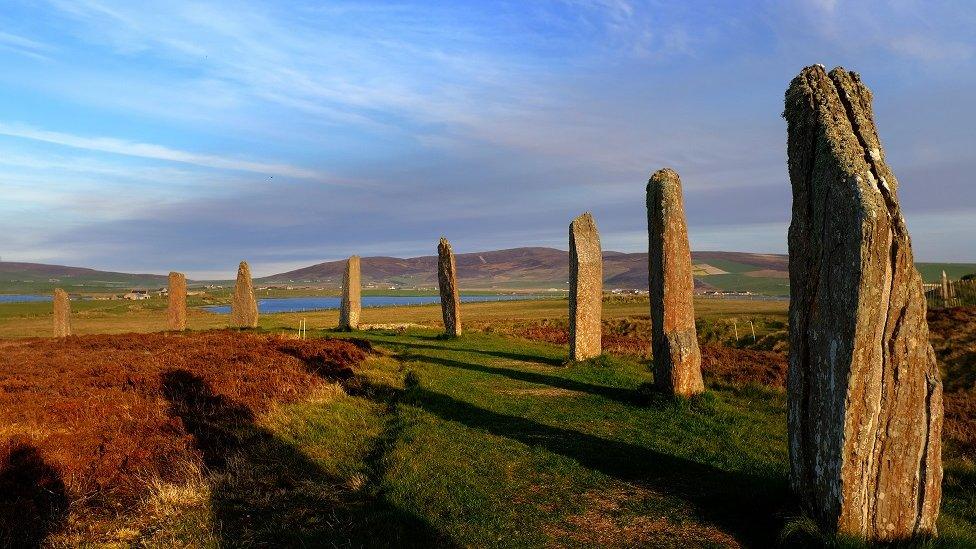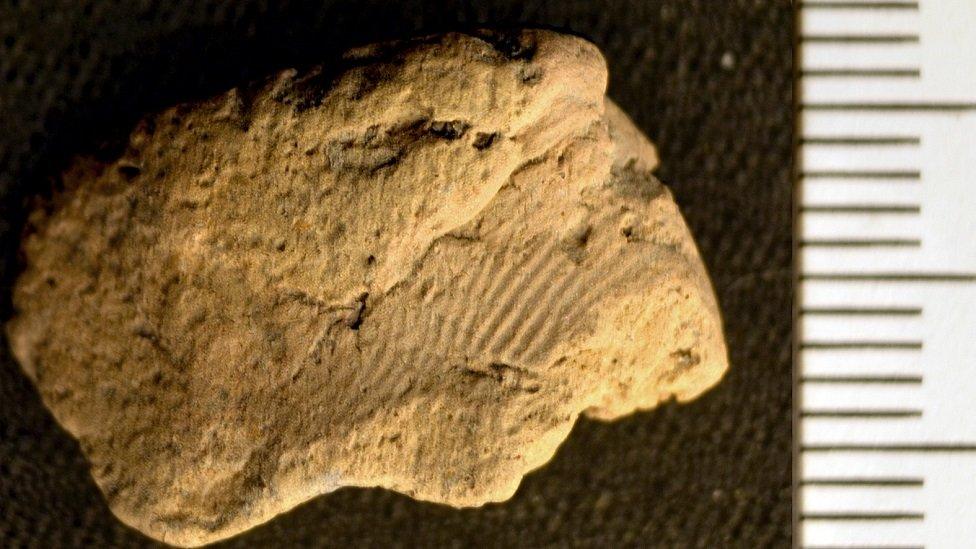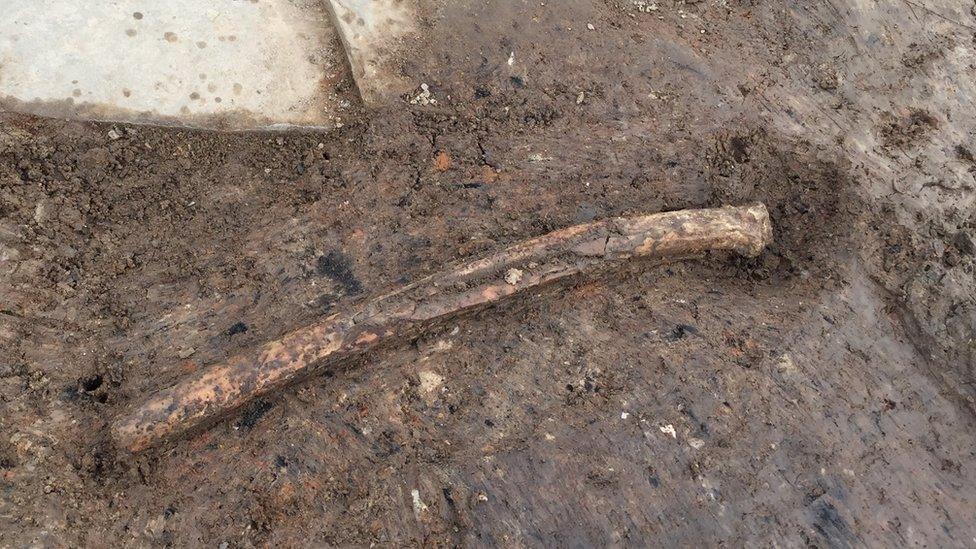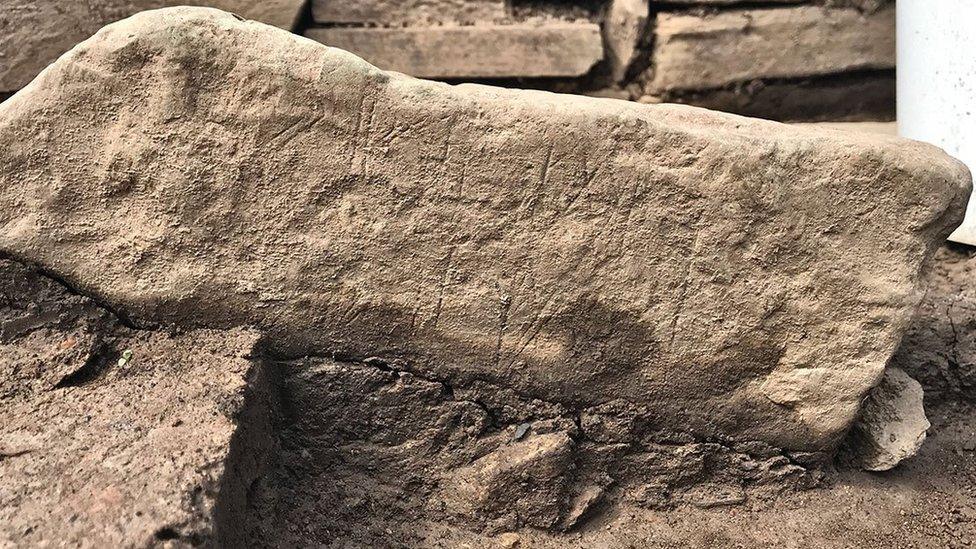Prehistoric pottery fingerprints 'left by two men'
- Published

Archaeologists found the prints of a fragment of pottery in Orkney
Archaeologists believe fingerprints left on a piece of Neolithic pottery belonged to two young men.
A single print was first discovered in April on the fragment of a clay vessel unearthed at Orkney's Ness of Brodgar archaeological site.
Further analysis identified two more prints, but only two of the three fingerprints had enough detail for archaeologists to study properly.
They think one was aged between 13 and 20 and the other 15 and 22.
How could archaeologists know the age and gender?
University of the Highlands and Islands Archaeology Institute said fingerprint components were known to differ according to age and sex.
It said the distance between ridges, for example, increased as an individual grew, while male ridges were usually broader.
The prints were examined by Prof Kent Fowler, director of the University of Manitoba's Ceramic Technology Laboratory in Winnipeg, Canada.
By measuring the density and breadth of the fingerprint ridges, and accounting for the shrinkage of the clay during drying and firing, he determined the prints were left by two young males.
Prof Fowler said: "Although the prints exhibit identical average ages, there is little overlap in the ridge values between the two measured prints.
"This suggests one print was made by an adolescent male and the other by an adult male."

The Ring of Brodgar is among a number of sites making up the Heart of Neolithic Orkney, a Unesco world Heritage site.
Nick Card, the director of the Ness of Brodgar excavation, said more than 80,000 pottery fragments, known as sherds, have been found at the site.
He said just a single sherd had offered an "unparalleled glimpse" into life 5,000 years ago.
Mr Card added: "It also raises many questions.
"The creation of this pot involved an adolescent boy - did he fashion the vessel or was he just involved in the manufacturing process, perhaps overseen by a more experienced potter?
"Were all children engaged in the creation of pottery from an early age or was it a task that involved a select few? Were different types of vessel created by different people within the household or community?"
Archaeologists have been excavating at the complex of ancient buildings at the Ness of Brodgar in the Heart of Neolithic Orkney World Heritage Site since 2006.
Related topics
- Published23 April 2021

- Published21 August 2019

- Published18 July 2019
